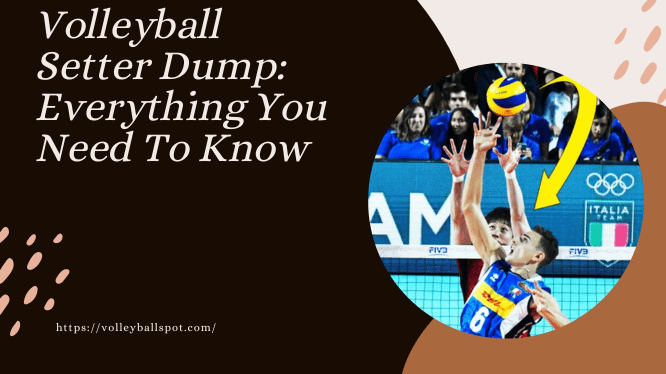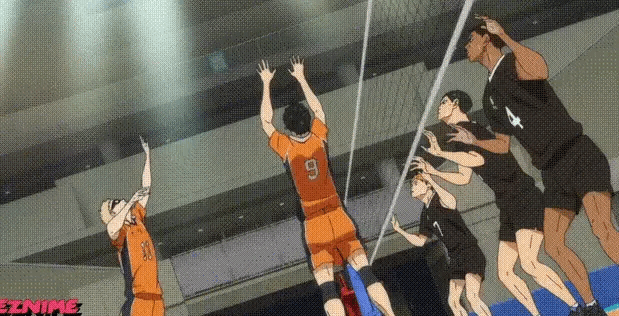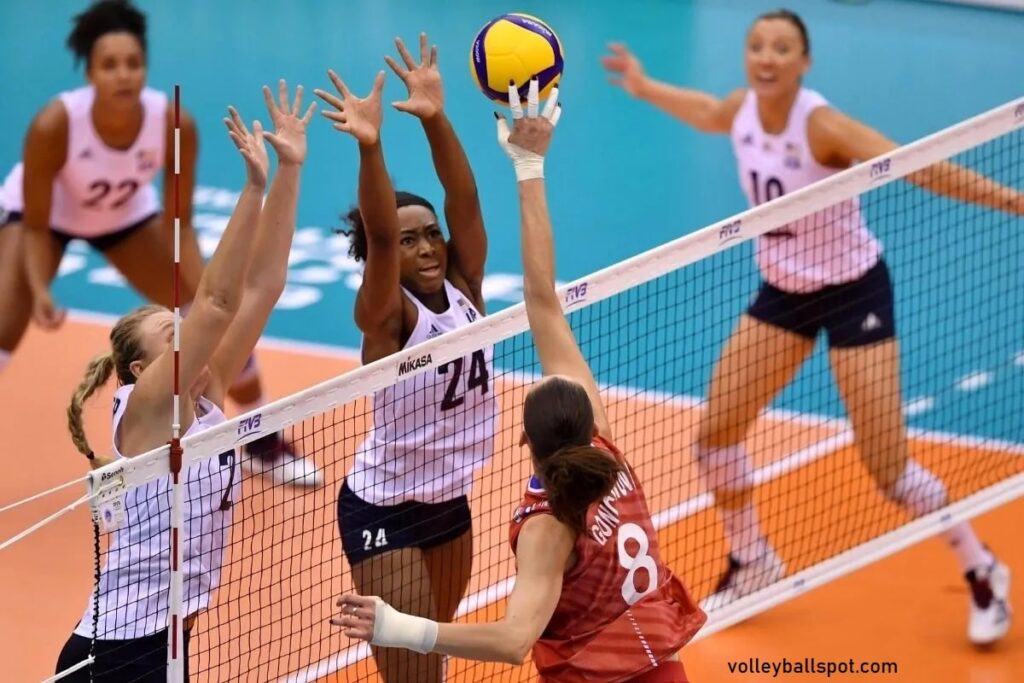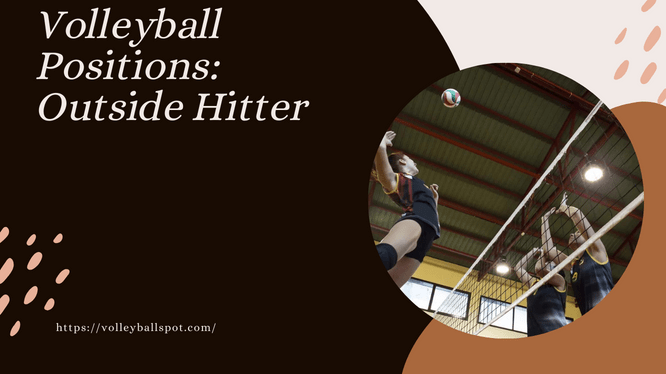
In the dynamic sport of volleyball, setters play a crucial role in orchestrating the team’s offense and setting up their teammates for successful attacks. One powerful move that setters can utilize to catch their opponents off guard is the setter dump. In this article, we’ll explore everything you need to know about the setter dump, including its rules, techniques, and strategies. Whether you’re a player looking to enhance your skills or a fan eager to understand the intricacies of the game, this guide will provide valuable insights into this game-changing move.
What Is A Setter Dump In Volleyball?
A setter dump is a strategic move in volleyball where the setter, instead of setting up a spiker, chooses to attack the ball themselves by “dumping” it over the net. This move is typically executed on the second ball and is intended to be deceptive and difficult to predict or defend. It involves the setter making a quick decision to surprise the opposing team by sending the ball across the net with either their left or right hand, depending on the situation.

One example of a well-executed setter dump can be seen in the performance of Simone Giannelli, one of the top 5 setters in the world. In a textbook setter dump, Giannelli appears to be setting the ball up until the last moment, where he cleverly decides to “dump” the ball himself with his left hand. This kind of deceptive play keeps the opposing team on their toes and can catch them off guard.
While most setter dumps are done with the left hand, it is not uncommon to see setters dump the ball across the net with their right hand, particularly aiming for position 4. This variation adds an element of unpredictability to the game and can create scoring opportunities for the setter’s team.
What Are The Setter Dump Rules?
When it comes to the setter dump in volleyball, there is one important rule to remember: the setter must be in the front court. This means that a back court setter is not allowed to perform this action.
In addition to being in the front court, the setter must also be mindful not to ‘carry’ the ball when performing a dump. Carrying refers to extended contact with the ball, which is not allowed. Since the setter is not spiking the ball but rather guiding or swiping it down, there is a slight risk of being called for a carry with this move .
The setter dump is a strategic move that can catch the opposing team off guard and create scoring opportunities. It requires precise timing and skill from the setter to execute effectively. By quickly assessing the defense and finding a gap in the opponent’s block, the setter can surprise the defense with a well-placed dump.
Overall, the setter dump is a valuable tool in a setter’s arsenal. It adds unpredictability to the team’s offense and keeps the opponents guessing. However, it’s important for setters to follow the rules and guidelines to ensure fair play and avoid penalties. With practice and experience, setters can master the art of the dump and use it to their team’s advantage.
Are Setter Dumps Illegal?
Setter dumps are not illegal in volleyball as long as certain conditions are met. The legality of a setter dump depends on two important factors. Firstly, the setter must be in the front court. This means that if the setter is positioned in the back court, they are not allowed to perform a dump. Secondly, the setter must make clean contact with the ball. This means that the ball cannot be carried or excessively prolonged in the setter’s hands during the dump.
When these conditions are met, setter dumps are considered legal and can be a valuable offensive strategy. The setter can surprise the opposing team by quickly attacking the ball on the second contact and placing it in an open area on the opponent’s side of the court. This can create scoring opportunities and disrupt the defense’s positioning.
Can A Back Row Setter Dump
A back row setter is not allowed to perform a setter dump in volleyball. Setter dumps are classified as an attack on the ball, and players in the back court are prohibited from executing such moves. However, it is important to note that Yes! setter dumps are 100% legal as As long as the setter stands in the front part of the court and touches the ball cleanly. In this case, the setter can strategically use a dump to surprise the opposing team and score points. The legality of a setter dump depends on the position of the setter on the court and the clean contact made with the ball.
The rule states that a back row setter cannot contact the ball above the net for a dump. However, if the ball is partially below the net when the setter makes contact, they are allowed to execute a dump. This rule ensures a fair game by limiting the attacking options of players in the back court. While back row setters may not be able to perform setter dumps, they still play a crucial role in setting up plays and facilitating the team’s offense from the back of the court. Their skills and decision-making abilities contribute to the team’s overall strategy and success.
Back row setters in volleyball have limitations when it comes to attacking the ball, but they can utilize alternative options like the setover. The setover is a deceptive move where the setter chooses to set a low and quick ball directly over the net into an open space. This move resembles a dump, but instead of scoring a point directly, the setter aims to create confusion and catch the opposing team off guard.
The premise of the setover is to disguise the ball as a set while actually executing a kill. This tactic is commonly used by back row setters, who are not allowed to participate in a completed block or attack a ball above the height of the net. By utilizing the setover, the setter can still contribute to the team’s offense and potentially score points without violating the rules.
Is The Setter Dump An Option In The 6-2 Rotation?
In a 6-2 rotation, the setter is positioned in the back court, which restricts the option of using a setter dump. The setter dump is a play where the setter quickly tips the ball over the net instead of setting it for a teammate. However, in the 6-2 rotation, the setter’s primary role is to set the ball for their teammates rather than attacking themselves.
To have the setter dump as an option, a team would need to be running a different rotation system such as a 5-1, 5-2, or 4-2. In these systems, there is only one setter on the court at a time, allowing them the freedom to attack and utilize the setter dump play.
In a 6-2 rotation, the setter’s responsibilities shift when they rotate to the front row. They become a hitter, while the opposite hitter simultaneously rotates to the back court. This rotation ensures that the team always has three attackers on the front row in every rotation.
Understanding the different rotation systems and their limitations is crucial for volleyball teams to make strategic decisions on the court. Each system has its own advantages and disadvantages, and the setter dump is just one of the many plays that can be employed depending on the rotation being used.
Can Someone Besides The Setter Dump?
Technically, there is no rule that states someone other than the setter cannot dump the ball in volleyball, as long as they are in the front row. However, the term “setter dump” refers to a specific play where the setter, who is typically in a position close to the net, chooses to dump the ball over instead of setting it . This play is considered an “in system” play and is most effective when the second ball goes to the setter.
It is rare to see a scenario where the second ball could go to a player other than the setter who is also in a position to dump the ball. The setter is usually the player closest to the net and in the best position to execute a dump effectively. Additionally, the setter is trained to make quick decisions and has the best view of the court, making them the ideal player to execute a setter dump.
When a setter chooses to execute a dump, they must be careful not to lift the ball with the palm of their hand or carry the ball by almost holding it. These actions would be considered illegal and result in a violation. The dump is a setter’s strategic weapon and when executed correctly, it can catch the opposing team off guard and lead to a point for their team.
Can A Spiker Do A Setter Dump?
Executing a setter dump as the second ball in volleyball requires precise coordination and strategic planning. By implementing a well-coordinated trick play, the team can set up a scenario where the designated setter switches with a spiker who acts as the temporary setter while the original setter transitions out on offense. In this unique setup, the spiker, now in the setter position, has the opportunity to perform a setter dump. Although not commonly seen in normal game situations, this play can be an effective surprise tactic when executed flawlessly.
Can A Libero Do A Setter Dump?
A libero, being a back court player in volleyball, specializes in defensive skills and passing. However, they are not allowed to perform a setter dump. Setter dumps are typically executed by the setter, who is positioned in the front court and responsible for setting up plays for their team.
Liberos have certain restrictions on their actions during gameplay. They are not permitted to block or attack when the ball is above the net. Instead, they are limited to performing an overhand toss from behind the 3-meter line.
How To Do A Setter Dump ?
The setter dump is a strategic move in volleyball that requires precise timing and execution. To perform a setter dump, you must be in the front court and have the ability to jump set.
When attempting a setter dump, it’s crucial to have a pass or dig that is tight but not too tight. If the ball is too close to the net, the opposing middle blocker may try to block or joust the overpass, interfering with your setter dump. Aim for a pass that allows you to control the ball effectively.
As the ball is coming in, approach as if you’re going to jump set, but at the last moment, use your left hand to push the ball down across the net. The goal is to place the ball in an empty area just behind or beside the blockers, typically within the 3-meter line. It’s important to avoid pushing the ball too flat or deep into the court, as this gives the defenders an opportunity to dig it.
Maximizing deceptiveness is key to a successful setter dump. Keep your intentions hidden until the last moment, making it impossible for blockers and defenders to predict your move. Inexperienced setters often telegraph their intention to dump the ball too early by lowering one of their arms too quickly. Stay composed and maintain a consistent setting motion to keep the opposition guessing.
By mastering the setter dump, you can add a powerful offensive weapon to your arsenal as a setter. Practice timing, accuracy, and deception to effectively execute this move and outwit your opponents on the volleyball court.
Can A Setter Dump With Two Hands?
Yes, a setter can definitely dump with two hands in volleyball. However, it is often more noticeable to defenders that a dump is about to happen when both hands are used. This technique is different from a setover and is still considered a dump or a dunk. It is important to distinguish between the two. One example of a setover, not a dump, can be seen in the play executed by Arash Dosanjh, a former teammate.
The two-handed “dunk” dump is often cleaner and quicker than the traditional dump, where the contact with the ball is more prolonged. This technique allows the setter to surprise the opposing team with a sudden attack, catching them off guard. However, defenders may be more prepared for a dump when they see both hands involved in the play.
When Should A Setter Dump?
Knowing when to dump the ball as a setter is crucial and requires a combination of skill and intuition. The pass or dig should be relatively tight, but not so tight that the blockers can immediately involve themselves. Additionally, a setter should always have a reason for dumping and not do it randomly. Strong setters constantly survey the other side of the court, looking for blockers who are not in the ready position or are committing too early, as well as large patches of empty court.
How Do You Defend Against A Setter Dump?
When defending against a setter dump, it is crucial for defenders to be aware the setter’s position on the court. If the setter is in the back court, they are unable to dump the ball, allowing defenders to relax a bit. However, if the setter is in the front court, defenders need to be prepared for a potential dump. As a defender, it is important to constantly assess the court and identify the largest patch of open space. Setters often aim to dump the ball into the widest open area in the front court. By being aware of this, defenders can position themselves closer to that attack line, increasing their chances of making a successful dig .
Reacting quickly is key when defending against a setter dump. Since a well-executed dump is disguised and gives defenders limited time to react, it is crucial for defenders in the back court to have quick reflexes and anticipate the setter’s actions. They need to be ready to move swiftly and dive into the open space where the setter is likely to dump the ball. This requires constant focus and awareness of the game situation, as well as effective communication among teammates to ensure everyone is on the same page .
Defending against a setter dump can be challenging, even for experienced players. The key is to anticipate and read the setter’s intentions. By studying the setter’s tendencies and observing their body language, defenders can gain valuable insights into where the ball is likely to be dumped. Additionally, defenders should communicate with their teammates and establish a strong defensive strategy to cover all areas of the court effectively. With practice, experience, and a keen understanding of the game, defenders can improve their ability to defend against setter dumps .
While it may not be the primary responsibility of a middle blocker to defend against setter dumps, it is still important for them to have a basic understanding of the defensive strategies involved. By being aware of the setter’s position and the potential areas where the ball may be dumped, middle blockers can better position themselves to assist their teammates in making a dig. Teamwork and communication are essential in defending against setter dumps, and everyone on the court should be prepared to adapt and react quickly to counter this offensive tactic .
Can You Setter Dump In Beach Volleyball?
In beach volleyball, the dump is not allowed due to stricter rules on what constitutes a double or carry. The dump is essentially a tip, which is prohibited in beach volleyball. Instead, a setter “dink” can be used as the closest alternative to a setter dump. A setter dink involves knuckling the ball on the second contact. However, it is not as effective as an indoor setter dump because it is challenging to control dinks, especially when faced with a blocker .
Beach volleyball has specific rules and regulations that differ from indoor volleyball. The aim is to promote a different style of play that utilizes the unique characteristics of the sand court. One of the differences is the prohibition of the dump, which is a common move in indoor volleyball. This rule encourages players to employ alternative strategies and techniques in their gameplay.
Haikyuu Setter Dumps
Setter dumps are a popular tactic in the Haikyuu volleyball anime. They involve the setter surprising the opposing team by quickly tipping the ball over the net themselves. This strategy catches opponents off guard and can result in points for the setter’s team. Notable examples include Hinata’s agile dumps and Kageyama’s calculated and precise moves. These setter dumps showcase the skill and versatility of the players in the anime.
Let’s take a closer look at some of the most impressive and memorable setter dumps in Haikyuu.
Tobio Kageyama Setter Dump Vs Inarizaki
When Karasuno faces off against Inarizaki High in ‘To The Top’ season 2, one of the standout moments is when Karasuno’s starting setter, Kageyama, executes a perfectly timed setter dump.

This move catches both the opposing team and the viewers by surprise, adding an extra layer of excitement to the already tense game. Kageyama’s decision to go for a setter dump at that particular moment showcases his strategic thinking and ability to adapt to different situations on the court. It’s a testament to his skills as a player and his contribution to Karasuno’s success .
Kenma Setter Dump
Kenma Kozume is a highly skilled setter in the series. He is particularly known for his frequent use of the setter dump technique. In an interesting observation, it can be seen in the provided clip that Kenma is using his right hand to dump the ball, which indicates that he is facing the wrong way on the court. This is likely an oversight by the animators, as it is uncommon for a setter to face the right side of the court .
Akaashi Setter Dump
Keiji Akaashi, a setter from Fukurōdani Academy, has successfully executed setter dumps in the anime. Both Kageyama and Tsukishima were taken by surprise by Akaashi’s perfectly placed dump.

Oikawa Setter Dump
Oikawa executed a brilliant move by identifying a poorly defended area of the court to target with his dump shot. It was perhaps the cleanest dump of all, as there was minimal resistance from the opposing team. The camera angle captured this impressive play, even though it should have been obstructed by the back/left defender who should have made an attempt to dig the ball. Oikawa’s strategic decision and precise execution showcased his skill and awareness on the court.




